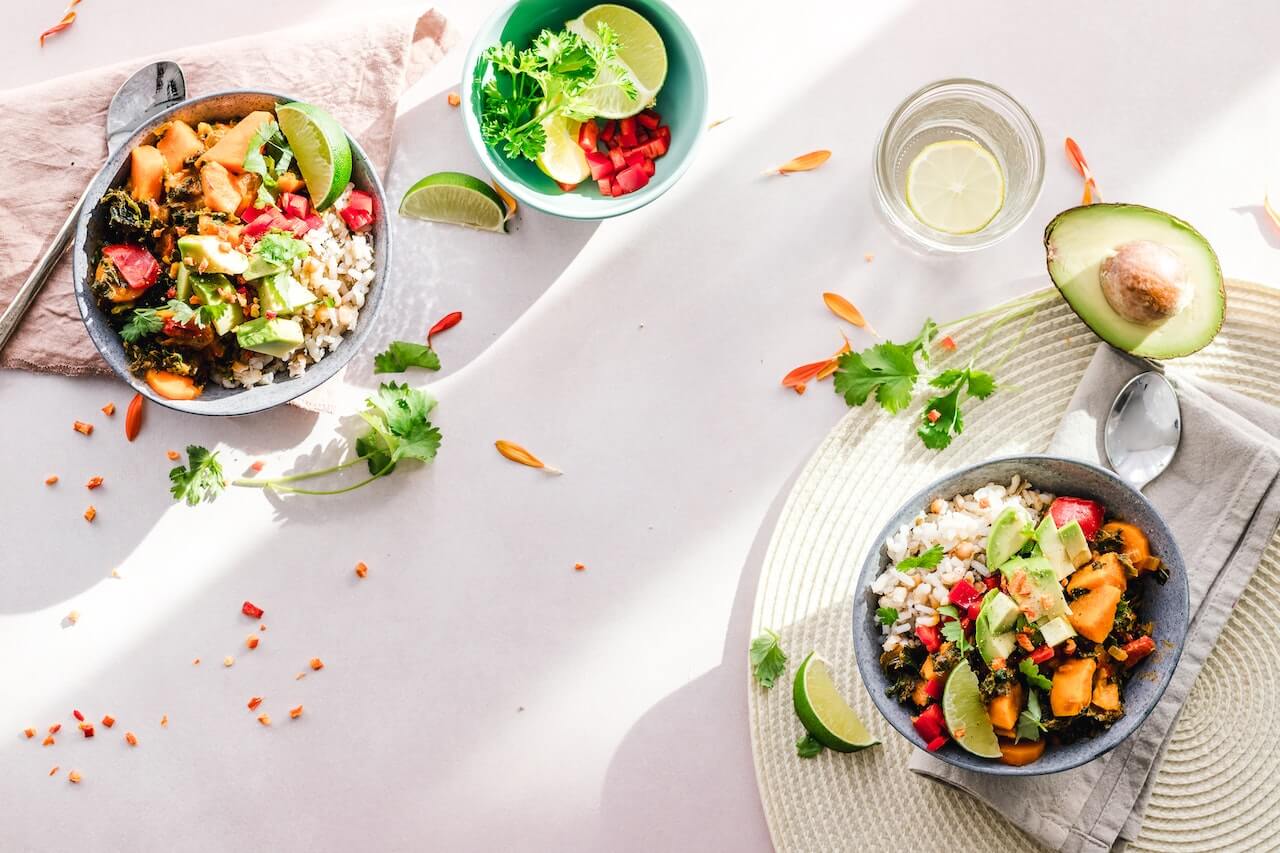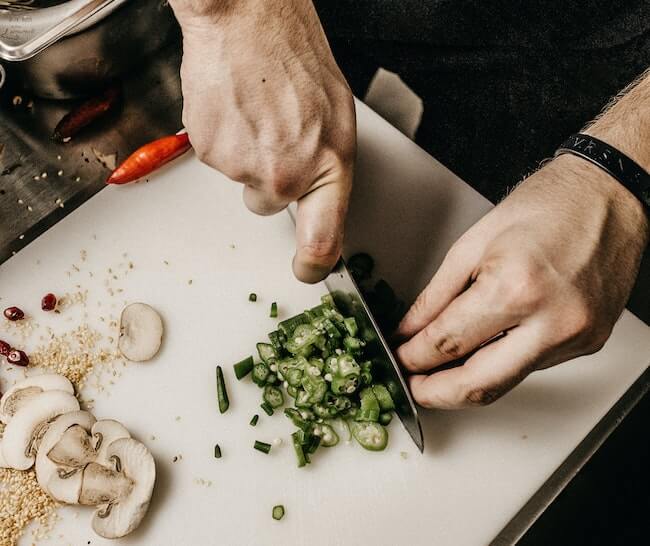Indulging in a sweet treat doesn't have to mean compromising on your commitment to a healthy lifestyle. Eating a balanced diet doesn't mean forgoing the joy of dessert; it's about savoring those sweet moments in moderation. If you enjoy eating dessert more frequently, crafting a healthier version of your favorite dessert allows you to satisfy your sweet tooth as often as you’d like.
Keep reading for a delicious and healthy cheesecake recipe that satisfies cravings without spiking your blood sugar. We’ll provide the ingredients, step-by-step preparation instructions, and tips to create a healthy dessert that's not only delicious but also low in calories, fat, and sugar.
{{mid-cta}}
Is Cheesecake Healthy? How to Make It Healthier?
While I don’t love referring to foods as healthy or unhealthy, traditional cheesecake is generally not considered healthy. It’s usually high in calories and fat; depending on what kind of cheesecake, it can also be high in added sugars.
There is nothing wrong with having traditional cheesecake as part of a balanced diet – one consisting of mostly whole foods like fruits, vegetables, whole grains, and lean proteins. However, if you wish to eat cheesecake more frequently, you can use a few substitutions to make it more suitable for everyday consumption.
A healthier cheesecake is trans-fat-free and low in saturated fat, calories, and sugar. So, if you’re trying to manage your weight or blood sugar, eating healthy desserts in place of your favorite recipes can be a good way to go.
There are several ways to make a healthy cheesecake, including both baked and no-bake varieties. This cheesecake recipe uses low-sugar alternatives and non-fat dairy substitutions, lowering calories, fat, and added sugar. You can also use muffin tins to make mini cheesecakes for better portion control.
Healthy Cheesecake Ingredients

Along with an 8-inch spring form pan, you’ll need the following ingredients to whip up a healthy, low-carb cheesecake. These healthy ingredients yield a yummy cheesecake that supports healthy blood sugar and overall health.
Healthy Cheesecake Crust
- One recipe for sugar-free cookies or 1 cup of no-sugar-added Graham Crackers crumbs
Traditional cheesecake has a buttery graham cracker crust. For this Greek Yogurt cheesecake, you can make your own sugar-free cookies for the graham cracker crust or use no-sugar-added graham crackers. For convenience, use graham cracker crumbs.
For a gluten-free option, try this almond flour cheesecake crust for a keto cheesecake.
- ⅓ cup unsalted butter
Butter helps the crust stay together and adds a buttery flavor. Make sure it’s unsalted, though you can add a pinch of salt to the crust if it suits your tastes.
Healthy Cheesecake Filling
- 2 cups non-fat plain Greek Yogurt
Try using a naturally thick brand to give the cheesecake extra stability. I love Siggi’s for its thick and creamy texture and high protein content.
- 1 cup non-fat cream cheese
You may opt to use full-fat cream cheese, but you must use softened cream cheese (at room temperature); otherwise, your filling will have little chunks of cream cheese instead of a smooth batter.
- ⅔ cup granulated sugar substitute (monk fruit sweetener, erythritol, stevia)
If you prefer to use a natural sweetener and aren’t concerned with calories or added sugar, you can opt for coconut sugar. Don’t use liquid or concentrated sweeteners (like honey, maple syrup, pure stevia, or pure monk fruit). Both will make the crust too runny.
- 1 tsp pure vanilla extract
This is optional but highly recommended for the best flavor.
- 2 large eggs
These help the cheesecake set up and also give it a creamy texture. There is no substitution for them in this recipe.
- ¼ cup all-purpose flour
- ¼ tsp salt
Healthy Cheesecake Recipe Step-By-Step

This healthy cheesecake takes 5 minutes of prep time and about 45 minutes total time.
- Preheat the oven to 325F. Gather all ingredients.
- Prepare the crust by using a food processor to crush the cookies or graham crackers. Add the melted butter.
- Transfer the mixture to an 8-inch springform pan lined with parchment paper and refrigerate it while you prepare the filling.
- Add the cheesecake filling ingredients to a high-speed blender and blend until smooth.
- Transfer into the cake pan and spread out until even on top.
- Bake in the oven for 45 to 50 minutes or until it has set in the middle. Cook time may vary depending on the oven. Try not to open the oven until the end of the cooking time.
- Remove the cheesecake from the oven and let it cool to room temperature before refrigerating it for at least 4 hours to firm up.
Nutritional Value Per Serving (Makes 12):
Calories: 93 kcal
Carbohydrates: 9g
Protein: 6g
Fat: 4g
Sodium: 166mg
Potassium: 98mg
Fiber: 1g
Vitamin A: 155IU
Calcium: 35mg
Iron: 1mg
Net Carbs: 8g
Healthy Toppings for Cheesecake
Spruce up your cheesecake with nutritious toppings like fresh berries. Fresh berries, such as succulent strawberries, plump blueberries, or tart raspberries, serve as vibrant jewels that give a touch of natural sweetness and create a visually stunning contrast against the smooth canvas of the cheesecake.
Consider sliced almonds, crushed walnuts, shaved dark chocolate, chocolate chips, or peanut butter as other options.
Tips for Healthy Cheesecake
- Use low-fat or Greek yogurt for a creamy texture.
- Experiment with natural sweeteners and non-nutritive sweeteners for less added sugar.
- Incorporate whole-grain or sugar-free crust options.
- Opt for minimalistic toppings to keep calories in check.
- Allow the cheesecake to cool thoroughly for optimal texture.
- Once removed from the oven, cover it completely to avoid any cracking on top of the cheesecake.
Healthy Cheesecake Storage
- Store covered cheesecake in the fridge for up to two weeks.
- Place the cheesecake in a shallow container and store it in the freezer for up to six months.
Frequently Asked Questions
How can I make a healthy cheesecake recipe dairy-free?
Swap out dairy with alternatives like coconut yogurt and dairy-free cream cheese. Swap butter for coconut oil. Adjust sweeteners accordingly.
How to make sugar-free cheesecake?
Substitute traditional sugar with natural sweeteners like Stevia, monk fruit, or erythritol for a sugar-free option.
Learn More About Healthy Nutrition with Signos’ Expert Advice
Signos is your trusted partner in guiding you toward the best version of yourself. Our experts are dedicated to providing you with valuable insights, tips, and personalized advice to help you make informed choices about what to eat.
Signos CGM empowers you to improve your health by keeping track of your diet, exercise, sleep habits, and blood sugar. Knowledge is power, and a CGM can give you specific information about how your habits affect your health.
Signos has a team of health experts who compile evidence-based nutrition information to help you improve your health and wellness. Check out the resources here.
Find out if Signos is a good fit for you by taking a quick quiz.
- Item 1
- Item 2
- item 3
































